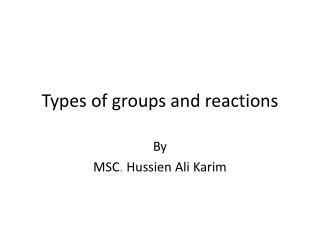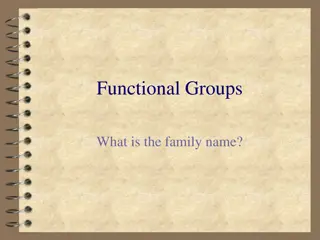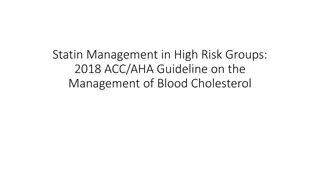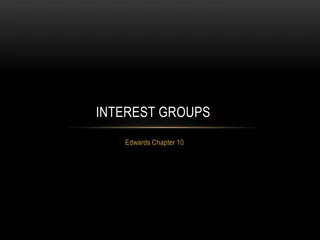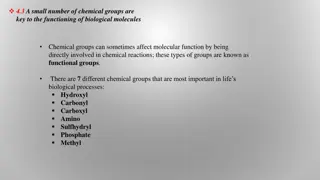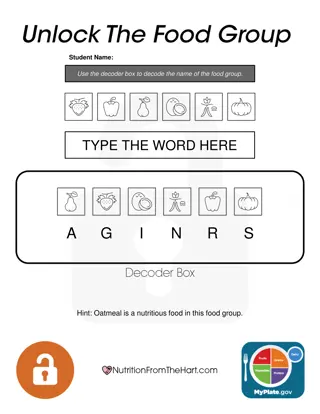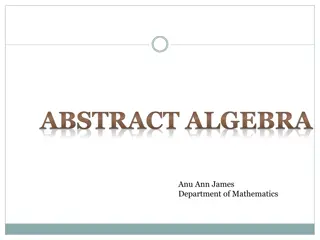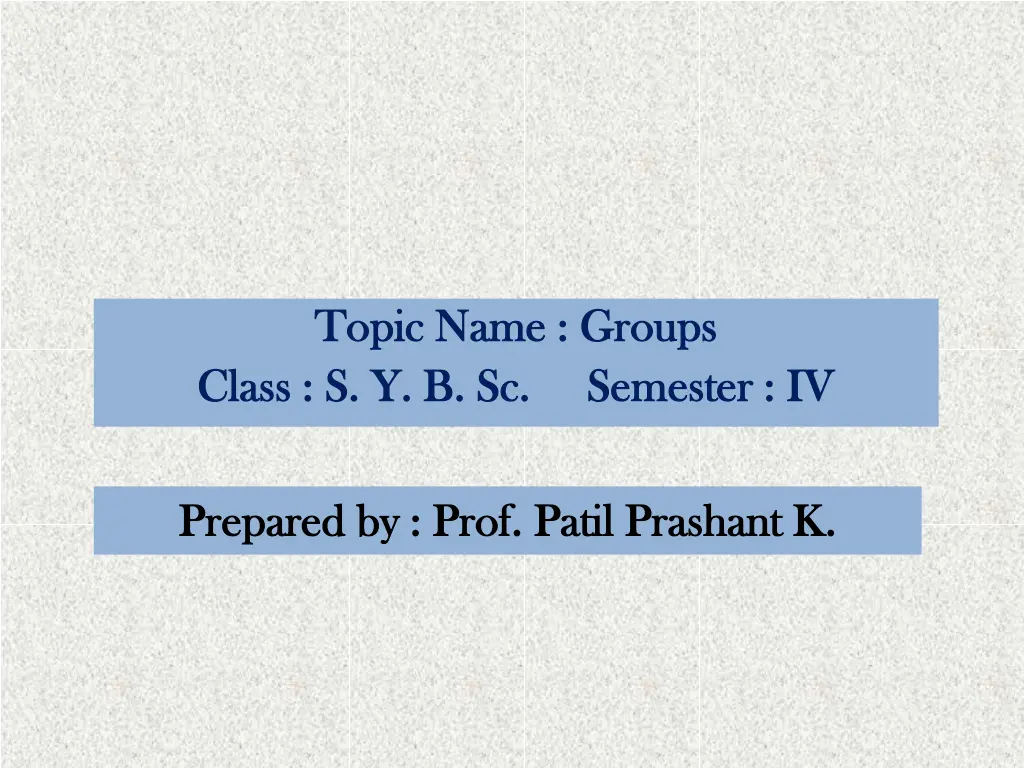
Understanding Groups in Modern Algebra
Explore the concept of groups in abstract algebra, defining group properties, including closure, associativity, identity, and inverses. Learn about Abelian groups and discover examples involving rational numbers, real numbers, matrices, and permutation groups.
Uploaded on | 0 Views
Download Presentation

Please find below an Image/Link to download the presentation.
The content on the website is provided AS IS for your information and personal use only. It may not be sold, licensed, or shared on other websites without obtaining consent from the author. If you encounter any issues during the download, it is possible that the publisher has removed the file from their server.
You are allowed to download the files provided on this website for personal or commercial use, subject to the condition that they are used lawfully. All files are the property of their respective owners.
The content on the website is provided AS IS for your information and personal use only. It may not be sold, licensed, or shared on other websites without obtaining consent from the author.
E N D
Presentation Transcript
Topic Name : Groups Topic Name : Groups Class : S. Y. B. Sc. Semester : IV Class : S. Y. B. Sc. Semester : IV Prepared by : Prof. Prepared by : Prof. Patil Patil Prashant Prashant K. K.
Introduction The term Group comes under the branch of an Abstract Algebra (Modern Algebra). Groups represents certain structures and Symmetries of some objects.
Formal Definition of GROUP Let G be a non-empty set, and * be binary operation. Then (G, *) is called as Group under the binary operation * if it satisfies following axioms: 1) Closure property: For a, b G a*b G 2) Associativity: For a, b & c G a*(b*c) = (a*b)*c. 3) Existence of an Identity: For a G and e G a*e = a , as an Identity of a group G under the operation *. 4) Existence of an Inverse: For any a G, there is an element b G such that a*b = e Then b = a-1is called as an inverse of a . Here e is called
Definition Continued . Moreover, the group (G, *) is called an Abelian (Commutative) group if a*b = b*a for each a, b G. Rotation by 120o Rotation by 240o Identity Reflection around So Reflection around S1Reflection around S2
Examples ( , +) & ( *, ) are a groups of rationales with respect to the binary operation + and (multiplication) respectively, where * = \{0} ( , +) & ( * , ) are a groups of real numbers with respect to the binary operation + & (multiplication) respectively, Where * = \{0}
Examples The set {1, -1, i, -i} is a group under the binary operation (multiplication). ( n, +) & ( p, ), p-prime are groups under the binary operation addition modulo n and multiplication modulo p respectively[ n:-is residue class modulo n]
Examples Mnxn( ) set of matrices and GLn( ) = {A Mn( ) / A is invertible} under addition & multiplication respectively. Symmetric group of permutation Sn. Klein s V4 group.
Examples ( , +) & ( , ) are not a groups under any of the given respective binary operations. ( , +) is a group under addition but ( , ) is not a group under multiplication as there is no inverse exist for any a in . e.g. For 2 then 2-1 = is an inverse of 2 under multiplication. But .
Subgroups Definition: H of G is said to be subgroup of a group G if H is itself a group under the same binary operation of G. Definition: Let H G. A subset H of G is said to be subgroup of a group G if H {0} & H is closed under products & inverses. i.e. x, y H xy H and x-1 H. If H is a subgroup of G then we write H G. Let H is a subset of a group G. A subset
Examples: 1. An Sn ; An = an alternating group i.e. a group of even permutation. 2. under addition. 3. A set of even integer is a subgroup of a group of integer under addition.

